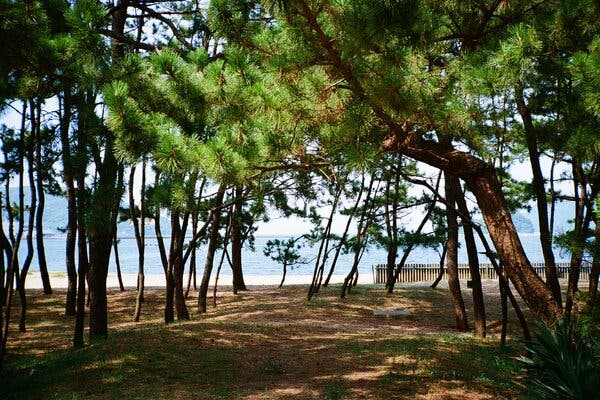Kyushu, often passed over by international visitors, is rich in crafts, history and culture. Here are four destinations to consider.

If I stared too long, the glossy, petrified tree trunk seemed to pulsate energy through the roof, down into the walls and past the fragile washi paper screens. “The house breathes,” Akihiro Tokunaga, the building’s owner, explained, snapping me out of the hypnosis. “You can feel that this tree is still alive.”
Some 140 years ago, laborers on Kyushu, the southernmost of Japan’s four main islands, soaked a massive felled tree in the ocean for 12 months. Once dried, the solidified trunk became the center pillar of a house, with everything else taking shape around it. Despite the architectural achievement, the home — and 140 years’ worth of abandoned belongings inside it — was next in line to be flattened into a public parking lot. After seeing an online alert from local activists to protect this piece of heritage, Mr. Tokunaga and his wife, Yuki, purchased the house and transformed the space into a cafe called Calali.
Cultural treasures on Kyushu reveal themselves almost as frequently as the ubiquitous vending machines found on Japanese street corners. I moved to the island to research energy development and the country’s depopulation crisis, and my travels across the region revealed how residents maintain local traditions under these modern pressures.
Of Japan’s four main islands, Kyushu is the second smallest, after Shikoku. Its seven prefectures offer distinct landscapes shaped by more than 70 volcanoes. Rich soil, vibrant coastlines and grasslands set against prominent mountains offer some of the highest-quality food ingredients found in the country. And people here are happy, with access to some of the best hot springs in the world, dynamic biodiversity, a rich cuisine and a generally slower pace of life.
Still, Kyushu faces challenges. Technological convenience mutates centuries-old routines that harmonize with the natural rhythms of the seasons. A low birthrate coupled with decades of a youth exodus to cities like Tokyo has resulted in quieter, emptier towns, and an aging population struggles to maintain seasonal festivals and traditional practices that can attract tourism and stimulate local pride. One tangible effect is the forgotten traditional homes waiting to provide familial warmth again.



